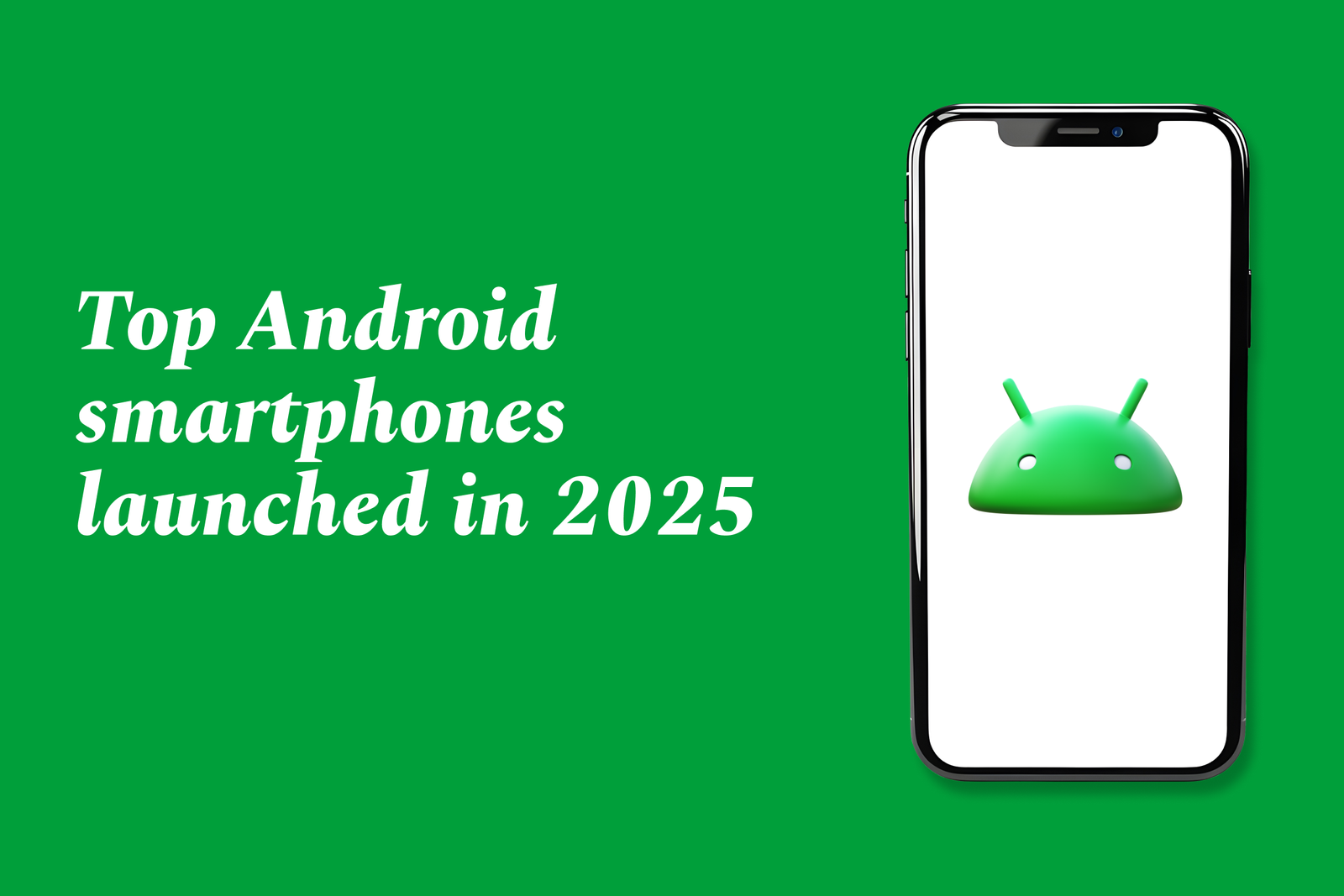Top Android Smartphones Launched in 2025
The top Android smartphones of 2025 showcase cutting-edge OLED displays, powerful processors like Snapdragon 8 Elite, and advanced AI features. Flagships from Samsung’s Galaxy S25 series and Google Pixel 9 Pro lead with premium cameras, performance, and long software support.
Top Android smartphones launched in 2025
1 ) Overview of the 2025 Android Smartphone Market
The Android ecosystem continues to emphasize choice with a diverse range of devices, from premium flagships to budget friendly options.
Nearly all new smartphones now use OLED displays, with improvements in screen size and resolution.
AI features are becoming common but remain mostly practical enhancements rather than transformative changes.
Longevity and software updates remain key criteria, with Google and Samsung offering up to seven years of OS and security support.
2 ) Best Android Phones of 2025
Google Pixel 9a and Pixel 9 Pro
Provide clean, user friendly software experience with AI powered features like Smart Screenshots and real time call translation.
The Pixel 9 Pro stands out for premium camera capabilities.
Samsung Galaxy S25 Series (S25, S25+, S25 Ultra)
The Galaxy S25 Ultra is recognized as the best overall phone, offering top tier performance, advanced AI features, an impressive camera system, and a gorgeous anti reflective 1440p screen.
Offers a sturdy aluminum frame and high durability rating (IP68 ).
Downsides include a high price and minimal innovation from the previous generation.
OnePlus 13
Recommended for those prioritizing battery life combined with solid performance.
Provides excellent value with competitive pricing.
3 ) Key Considerations when Buying a 2025 Android Smartphone
Unlocked Phones: Buying an unlocked phone is advised for flexibility across carriers and ease during international travel.
Display Specs: OLED panels dominate, with advancements such as AMOLED and Dynamic AMOLED 2X improving quality. Screen sizes typically range from compact 6.1 inches to large 6.9 inches diagonal.
Processor Choices: Qualcomm Snapdragon 7 series or higher and MediaTek Dimensity 7000 or above are solid picks. Google’s in house Tensor and Samsung’s Exynos chips are also prominent, each with region specific availability.
RAM & Performance: A minimum of 6 GB RAM is recommended for smooth multitasking, while 8 GB or more future proofs the device.
Software Longevity: Look for devices promising at least three years of Android OS updates and four to five years of security patches.
4 ) Is 2025 a Good Time to Buy?
Yes, due to emerging tariffs on Chinese electronics, prices for consumer electronics including smartphones may rise soon.
It’s advisable to purchase now if an upgrade is needed to avoid inflated prices later.
5 ) User Preferences and Experiences
Users switching from iPhones look for a clean OS experience, strong gaming performance, and top notch cameras, with Pixel phones preferred for software but lacking the Snapdragon 8 Elite CPU.
Samsung devices are prized for hardware but often criticized for their custom software skins.
Summary
The top Android smartphones launched in 2025 offer exceptional choices tailored for different user needs, from Google's Pixel 9a for clean software and AI features, to Samsung's Galaxy S25 Ultra with flagship level performance and cameras. Buyers are advised to prioritize unlocked phones, OLED displays, reputable processors, and adequate RAM while considering current market price trends and update longevity to select the best device for their preferences and future proofing needs.
https://justacademy.in/news-detail/android-enterprise-management-features
https://justacademy.in/news-detail/flutter-for-enterprise-level-desktop-apps
https://justacademy.in/news-detail/flutter-ai-use-cases-in-fintech-&-healthcare
https://justacademy.in/news-detail/adaptive-ui-in-flutter-4.0
https://justacademy.in/news-detail/google-i/o-2025-highlights:-flutter-takes-the-lead
Related Posts
In 2025, top Angular libraries offer modern, feature-rich components and tools for building dynamic web apps. From powerful data grids to low-code platforms like UI Bakery, these libraries enhance development speed, UI design, and scalability, making them essential for Angular developers.
Migrating from AngularJS to Angular 17 involves gradually upgrading your app by running both frameworks together using tools like ngUpgrade, rewriting components in TypeScript, and adopting Angular’s modern architecture to enhance performance, maintainability, and long-term support.
Angular state management tools help organize and handle app data efficiently, improving scalability and maintainability. Popular options include NgRx for robust, RxJS-based patterns, and newer Signal Store solutions that offer simpler, reactive approaches integrated tightly with Angular’s latest features.
RxJS in Angular empowers developers to manage asynchronous data streams with powerful operators like `forkJoin`, `combineLatest`, and `zip`. Mastering these key operators in 2025 is essential for building efficient, reactive applications that handle complex event sequences seamlessly.
Angular performance optimization in 2025 focuses on improving app speed and responsiveness by using techniques like OnPush change detection, lazy loading, efficient data caching, and AOT compilation. These practices reduce load times, enhance user experience, and ensure scalable, fast Angular applications.
In 2025, Angular remains preferred for large-scale, enterprise apps with its robust, all-in-one framework, while Vue attracts developers seeking simplicity and fast development for smaller projects. Both frameworks excel, with choice driven by project needs and team expertise.
Angular Signals are a new reactive primitive in Angular 16 that enable fine-grained, efficient change detection by automatically tracking dependencies and updating only affected parts of the UI. They simplify state management and boost app performance, revolutionizing Angular's reactivity model.
Angular interview questions to prepare in 2025 focus on core concepts like components, directives, data binding, routing, and dependency injection, along with TypeScript mastery and latest Angular features to ensure strong practical knowledge for building scalable, efficient web applications.
AngularJS reached its official end of support in January 2022, meaning no further updates or security patches. To ensure app security and performance, developers should consider migrating to modern Angular versions or seek third-party long-term support options if immediate migration isn’t possible.
The Angular Roadmap 2025 highlights upcoming features focused on improving developer experience and performance, including zoneless Angular, Signals integration, enhanced Forms, async data handling, improved HMR, and expanded Angular Material/CDK enhancements, driving modern, efficient web app development.










